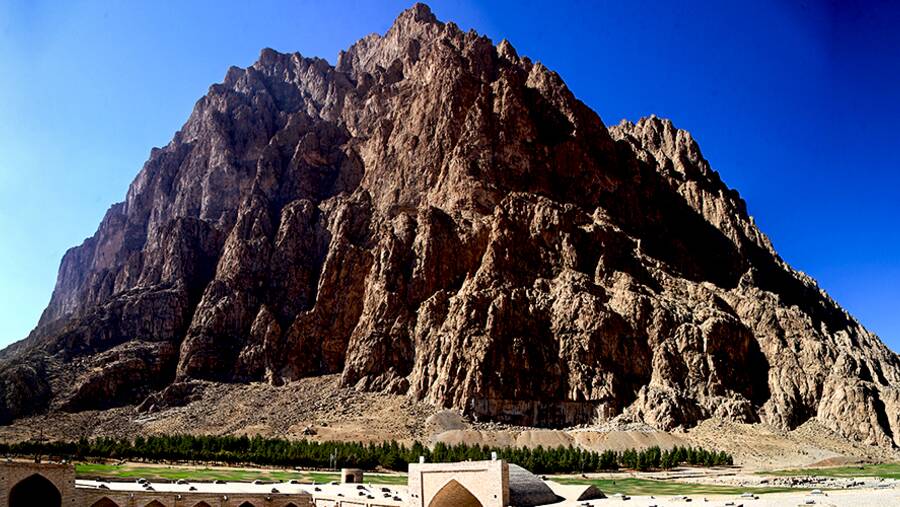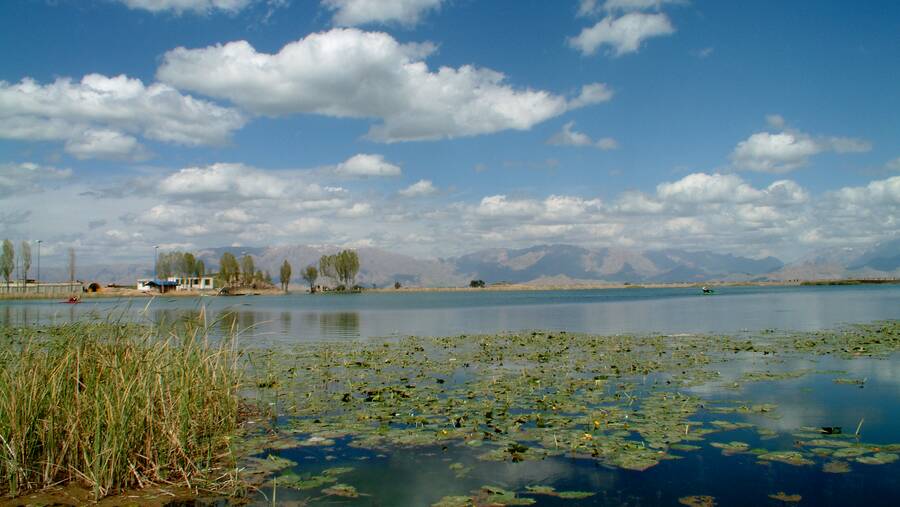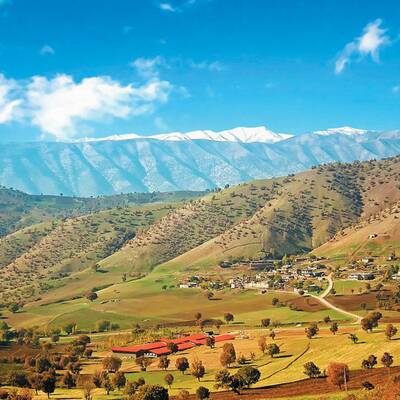Sarpol Zahab city is a city in Kermanshah province. It shares land borders with Iraq country to the west. This city consists of two counties and seven rural districts and has a semi-warm and semi-arid weather in the middle of which the permanent river of Alvand is flowing.
Sarab hot water spring located in five kilometers of the southwest of Sarpol Zahab in a village with the same name is the supplier of the drinking water and a main part of the needed water for agriculture of the area.
The pastures of Sarpol Zahab are among the best Qashqai pastures of Kermanshah that have along with the fertile soil and abundant water made the agriculture and animal husbandry the most popular occupations in the region. So that the husbandry and agricultural products like the wheat, barley, pomegranate, fig and apple are among the export products of the region.
Ahmad ibn-Isaac is the main shrine of the city; The old building of this monuments was ruined during the imposed war and reconstructed later.
Piran waterfall is one of the natural tourism attractions of Sarpol Zahab located in Piran village, in 10kilometers of the northeast of Sarpol Zahab. Piran waterfall is one of the highest waterfalls of Iran with about 150meters height. Among other natural attractions of this region Galin village, Sarab Qale Shahin, the forest promenade of Imam Abbas, Sarab Maran, Sarab Zahab Zahab and the forest promenade of Mirhesar should be mentioned.
The antiquity of this city has been estimated to be 4800 years based upon the ancient monuments and inscriptions. Many historical and ancient works are placed in Sarpol Zahab that has turned this area into a paradise for the history and archaeology lovers. One of the main examples of these inscriptions is Anubanini rock relief that is among the most significant historical heritages of this city.
Another example is the construction of Taq-e Gara or Taq-e Shirin which is located in Pataq neck, 15kilometers far from Sarpol Zahab city. In the lower parts of this Taq (arch) there exists the Zij-e Manijeh that is one other historical monument of this city, related to the late of Sassanid empire which has been inscribed on the list of national heritage of Iran in 1384 S.H.
Parthian rock relief, Kalgara rock relief, Dokan-e Davood rock tombstone and the relief of Hezar Jarib mountain are some other historical heritages of Sarpol Zahab.
Kangar, Kalaneh, Tarkhineh, Soruneh, Saji bread, Gerdeh, Dolmeh and Bezhi are the main local foods and edibles of Sarpol Zahab.




.jpg)
.jpg)
